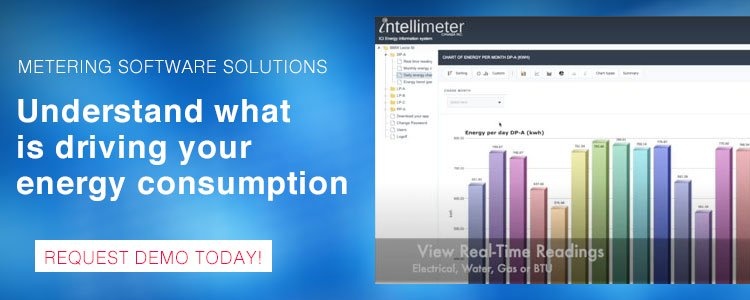The use of data and analytics are no longer limited to financial and investment companies. Because of its accessibility, organizations across all industries can now make use of data and sophisticated analytical tools to gain insights to improve operational efficiency in their business.
The energy industry is no exception. The emergence of smart energy meters has created exciting new opportunities to collect and analyze data for energy optimization, billing, monitoring, diagnostics, and a lot more.
Money can be saved only after knowing where and when energy use can be better allocated. Data also opens the scope to increase efficiency at any single unit level as well as improve operations of whole building.
Identifying Efficiency Opportunities
The goal of data collection is to understand when and where consumption is taking place, and validate it at end-use levels, then accumulate it to represent a whole building. Anomalies can be detected, such as analyzing water consumption at odd times. Performance improvement by planning the frequency of polling the meter readings; in water metering is just as critical to plan to take readings hourly, or at least in the morning and in the evening to find differences in consumption or usage when not expected and have the ability to assess if there may be a leak.
Power adjustments can be made for businesses, whether they operate a day shift or also a night shift; simply because the night population is not always the same. With night and day shifts occupancy density is higher or lower based on schedules, and so the consumption must follow, and metering is there to confirm. Other options may include changing availability hours of specific areas or selecting specific equipment to run the night shift when the energy rates are lower to help bring down water and energy costs.
Finding Operational-Opportunities
Thanks to software platforms that display graphical representations of the Data, operational-opportunity findings can focus on using the data collected from the meters to first visualize the consumption and validate with the expectations that the systems are working as recommended. Energy usage data of equipment and machinery in larger manufacturing companies can be monitored to report inconsistencies that faulty parts may cause. As a result, preventive measures can be made before damages become extreme while equipment parts are still replaceable.
Over time the accumulation of this data provides material for further studies to identify areas needing more detailed metering, such as an alternate production line or similar equipment, yet using more energy than the other. These may indicate the need to replace older units with more cost-effective ones. In addition, detailed metering data would indicate which types of equipment are more energy-efficient and which are costing more to maintain.


